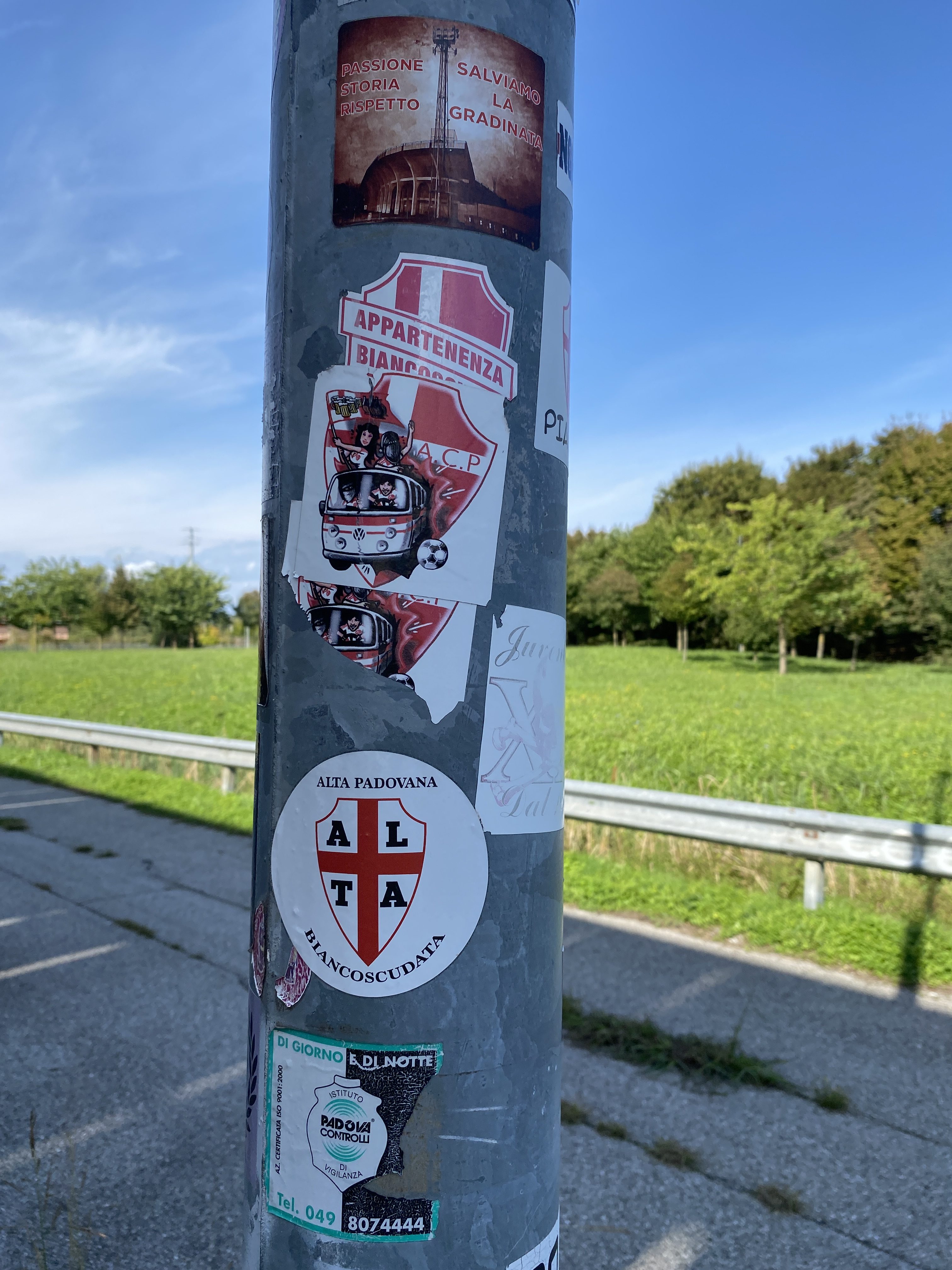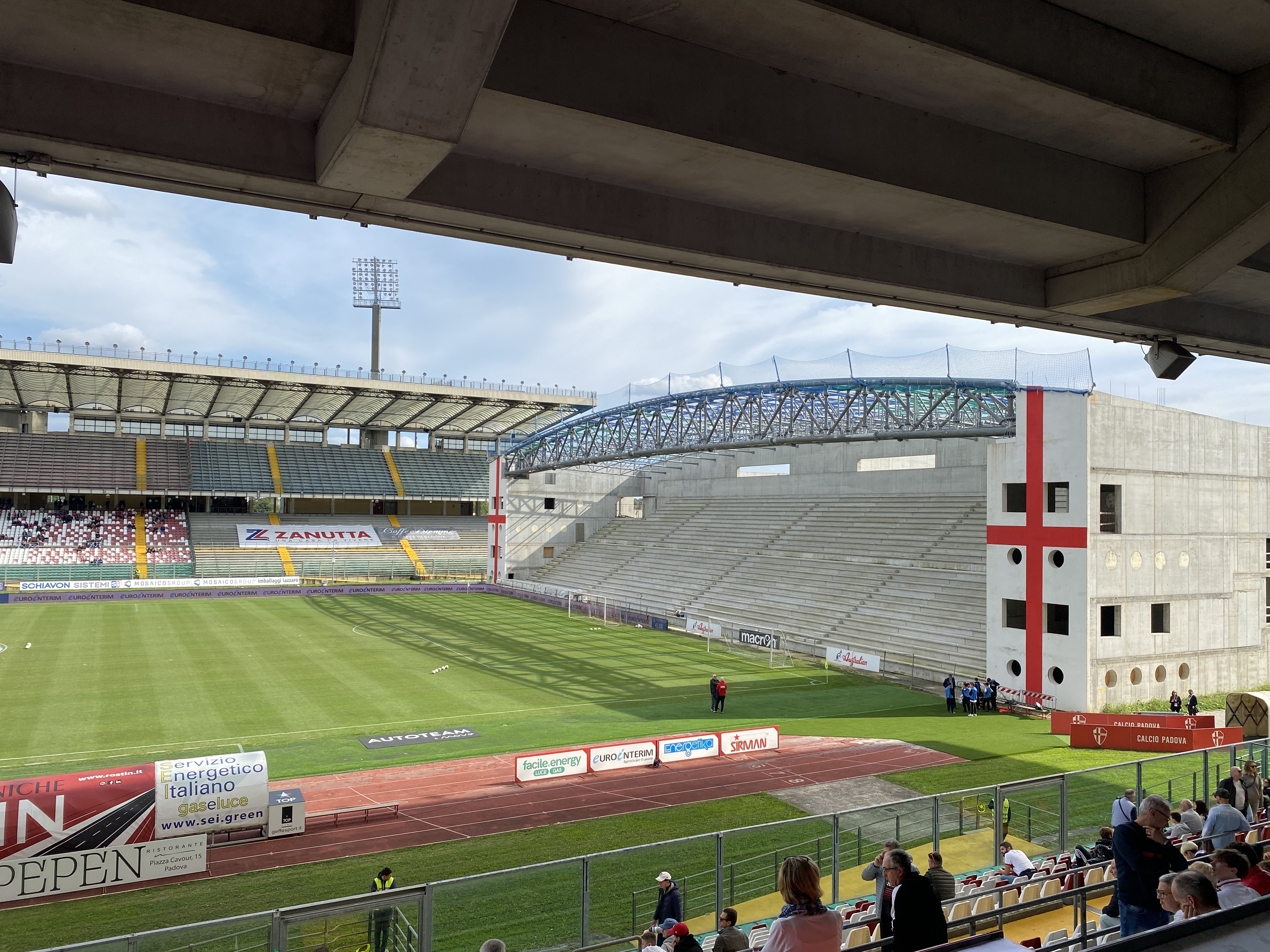
Unwanted Guests at Home for 30 Years: Why Padova Ultras Are Boycotting the Stadio Euganeo
By Dan Cancian
Fifteen years ago in August, Bruce Springsteen strode on stage at Giants Stadium to a raucous ovation, wearing the look of a man who meant business.
This, he told an emotional crowd, was “going to be the last dance”.
Springsteen wasn’t retiring, but the stadium he had played at for the previous five nights – and where he had played 24 shows over the previous quarter of a century – was and would be demolished within six months.
To mark the occasion, he opened the set with Wrecking Ball a song he’d specifically written for the occasion, in which Giants Stadium itself was the narrator.
Poignantly, the arena envisages its future when “all this steel and these stories, they drift away to rust” and “all our little victories and glories have turned into parking lots.”
The track perfectly encapsulates the emotional toll of leaving an arena behind. Finance may dictate venues being razed to the ground in the name of progress, but for fans stadiums are more than steel and steps. They are custodians for what most of us deeply cherish. A feeling of belonging to a community, a place where memories are made and shared.
A wrecking ball typically makes way for something new. But what if that something is markedly worse than its predecessor?
It is a question that has felt relevant for Padova for the past three decades, since they left the Stadio Appiani for the Stadio Euganeo in 1994.
“Nobody likes this stadium, and nobody ever has,” Massimo, one of the leaders of the Appartenenza Biancoscudata group, tells Destination Calcio when we meet him outside the Euganeo ahead of Padova’s clash with Vicenza.
“It’s a generic, unrepresentative dump.”
After three decades of simmering discontent over the Euganeo, Ultras Padova and Appartenenza Bianscocudata – a nod to Padova’s Biancoscudati nickname, meaning the white-shielded – have taken a stance this season, leading a boycott of home matches.
Citing the club’s perceived lack of desire to constructively engage in discussions to find an alternative solution, the supporters groups announced the radical step in June.
“We have never felt at home here, but always unwelcome guests,” they said in a statement, in which they accused the club of “stealing 30 years from us”.

The house the Ultras built
“We’re in the car park, a grey car with its boot open,” reads the text from Massimo as Destination Calcio arrives at the Euganeo three hours before kick-off.
There’s no love lost between Padova and Vicenza and matches between the two are often hostile affairs.
Bar a sizeable police presence outside the ground, however, you would struggle to think one of Veneto’s biggest derbies is just hours away.
In fact, you would struggle to think there is a match at all at the Euganeo.
The swag sellers, hot dog and beer kiosks that are near ubiquitous outside grounds in Italy are nowhere to be seen.
Until, that is, you walk around the perimeter of the stadium and approach the Curva Sud gates.
Here an access road leads away from the ground and over the canal adjacent to it, and finally you get the feeling of being in a football environment.
Dressed in the obligatory Adidas Originals, Fred Perry and Stone Island attire that is so common across British grounds, some of Padova ultras are milling around their clubhouse.
More open-air shed than pub, the structure is positively rustic but equally charming in its own way.
Red and white murals stretch across its perimeter, flags and banners are hung and beers flow. The odd smoke bomb and flares are set off, loud enough to leave your ears ringing and the air thick with the smell of sulphur.


At the bar, two slush machines have been converted to giant Campari spritz mixers, while a small grill churns out burgers at a rate of knots. Oasis, The Stone Roses and The Verve blare out of a speaker at an alarmingly loud volume.
The whole scene is as “anti modern football” as they come and all the better for it. There is, however, a certain edginess to the atmosphere around the clubhouse.
Strangers, you suspect, need not apply here.
The car park where the rendezvous with Massimo is scheduled is less than 100 yards away and Destination Calcio is greeted by a cold pint.
Massimo and his fellow Appartenenza Biancoscudata members are positively friendly, but their offer of a dangerously generous helping of grappa is politely declined.
It’s a similar picture across the car park, with picnic tables set out and sandwiches, cans and wine bottles spread across them.
Across the Atlantic, this is known as tailgating, an American tradition that’s an essential part of watching NFL or college football games.
In Padua, however, tailgating is a mere necessity. If the old Yankee Stadium in New York was “The house Ruth built”, this was built by Padova ultras instead.
“The fans built that place with their own money,” Massimo explains. “It’s the only place to get food or a drink. If it were to close, all that would remain is what you see now: spontaneous food stalls in a parking lot.
“That’s been going on for 30 years. The club has never bothered to do anything about it.”
Desolately plonked on the northern edge of the city, the Euganeo is difficult to reach. The closest bus stop is at least a 20-minute walk away, while walking to the ground from the old town takes just under an hour.
So has the location contributed to the sense of disenfranchisement?
“This stadium hasn’t helped bring in a new generation of fans,” explains Massimo.
“It’s out in the sticks and you can only get there by car. It’s tough to get people to come, especially when the team isn’t doing well.”
As kick-off approaches, the clubhouse gets busier and busier with the ultras gathering to watch the derby on TV. While they avoid the terraces once more, I make a polite exit and head to the press box.


The catalyst for the protests
The difference between the Euganeo and the Appiani could hardly be any starker, architecturally as well as geographically.
Calcio’s varied stadium landscape has featured some eye-sores, but Padova’s current home stands heads and shoulders above the rest.
The stadium feels far too big for its tenants, despite the fact its original 32,000 capacity has long been reduced to 18,000 because of safety reasons.
At just over 3,000, Padova’s average home attendance is a fraction of that, but still good enough to be third-highest in Serie C Group A, behind Triestina and arch-rivals Vicenza, who average a shade under 9,000.
In 2021, part of the running track was removed to bring the Curva Sud closer to the pitch, but the stadium remains an incongruous, lopsided mess.
At the opposite end, the Curva Nord remains completely exposed to the elements and approximately 70 metres from the pitch.
By contrast, the much more intimate Stadio Appiani is located a stone’s throw away from Padua’s charming old town and Prato della Valle – the largest town square in Italy.
So what has ignited the protests? After all, as Appartenenza Biancoscudata acknowledged themselves, Padova moved to their current home three decades ago.
“The catalyst for the protests was twofold: a completely inadequate stadium and a severe lack of transparency and communication from the club,” explains Massimo.
“The club see themselves as the business and us fans as the customers. But when a business starts losing customers, it should do all it can to win them over again.
“The club’s failure to communicate effectively is particularly glaring when the team is losing.”

And Padova have done their fair share of losing over the past three decades.
The club’s last taste of Serie A came in 1996, before a slow but inexorable decline culminated in relegation to Serie C three years later.
Having narrowly missed out on promotion to Serie A in 2011, Padova entered bankruptcy three years later and temporarily found themselves exiled into non-professional football.
On the pitch at least, the picture has steadily improved. Padova reached the Serie C play-offs final twice in the past four seasons, winning the Coppa Italia Serie C in 2022.
The Biancoscudati made the final again last term but lost 5-4 to Catania on aggregate and were knocked out in the Serie C play-offs by Vicenza.
The Patavini exacted a measure of revenge on Sunday, beating their Veneto arch-rivals 1-0 at the Euganeo to remain top of Serie C Group A with 22 points out of a possible 24 so far, five ahead of Vicenza.
It makes the decision of watching on from afar even harder.
“It’s really tough,” Massimo says of the decision to boycott home matches.
“We’ve got fans who have had season tickets for like 30 or 40 years. Not going to the games will hurt us fans more than it will hurt the team.”
So far, the club and the city council have both declined to engage with the ultras and Appartenenza Biancoscudata over their protest.
“The club has completely ignored the fans. There’s been no communication whatsoever,” Massimo explains.
“Our protest has fallen on deaf ears at the mayor’s office and the city council. They’ve ignored us completely.
“The city council only takes a stand if we align ourselves politically, which is something we do not want to do. We have no interest in politics.”
Absent at the Euganeo, the Padova ultras and members of Appartenenza Biancoscudata continue to follow the team away and in big numbers too.
Around 1,000 fans made the trip to Verona for the first away fixture of the season against Caldiero Terme, despite Padova’s allocation being half of that.
The Euganeo: A cursed history
The location is just one of myriad issues that have beset the Euganeo since Padova decided to leave the Appiani.
Padua was not a host city for Italia ‘90, but the public funds made available for new stadia ahead of the World Cup were a one-way ticket to a modern new ground.
Following the Biancoscudati’s return to Serie B in 1987, the club felt a new stadium was needed to propel Padova back to Serie A.
Significantly, the decision to leave the Appiani came with the fans’ blessing.
“In the late 1980s, Padova were on the brink of Serie A,” Massimo explains.
“With the influx of funding for the 1990 World Cup, the idea took hold in Padua that, to have a team capable of competing in Serie A we needed a bigger stadium outside the city.
“Both fans and the club agreed. I remember even the players saying we needed a new stadium. In a way, we brought this upon ourselves.
“The thing is, nobody could have predicted this mess.”


Ominously, the original design of architect Gino Zavanella for a 48,000-capacity stadium was borrowed from one of the discarded proposals for Turin’s Stadio delle Alpi ahead of the 1990 World Cup.
In hindsight, it was a sign of things to come, considering the now-demolished Delle Alpi became a byword for Italy’s dysfunctional approach to building new stadia.
Construction of the Euganeo began in 1989, but a bribery scandal during the procurement process meant the stadium would not be inaugurated for another five years. Even then, three of the stands did not have a roof.
An established Serie A club by the time of their first match at the Euganeo, Padova had been relegated to Serie C2 – then Italian football’s fourth tier – by the time work was eventually complete with the construction of the Curva Sud in 1999.
In the intervening 30 years since Padova left the Appiani, the number of Padovani dreaming of a return to “The Lion’s Den” has only grown.
It was here, under Nereo Rocco – one of the early pioneers of Catenaccio – that Padova finished third in Serie A in 1958 – to date the club’s best achievement in the top-flight.
Today, a plaque in the Appiani’s small car park is the only tangible reminder of Rocco’s legacy.
The stadium is still occasionally used by Padova’s youth teams and as a training ground by the first team ahead of selected fixtures.
The day before the derby against Vicenza, the ultras and Appartenenza Biancoscudata both turned up in numbers with flags and flares at the Appiani during an open training session to generate the kind of atmosphere the Euganeo has long been devoid of.
Three of the the ground’s four stands have been demolished and the current plan is to turn it into an urban park.
The old grandstand is being removed to make way for a terraced embankment designed to replicate the original 1924 configuration, while a canal outside the ground that has been blocked since the 1950s will be excavated and reopened.
For now, the Appiani remains a building site. One where, as Springsteen would have it, Padova fans have seen their “best hopes and desires scattered to the wind.”
Related Articles
Related Articles
We get a local take on what's hot in Cremona - where to eat and drink, sights to see and handy hints that might not be in the tourist guides.
The Artemio Franchi will always be the main reason calcio fans head to Florence but there is one other thing that must be on the to-do list.
After the final whistle is blown at Stadio Giuseppe Sinigaglia, there is no better place to unwind than Bellagio.





